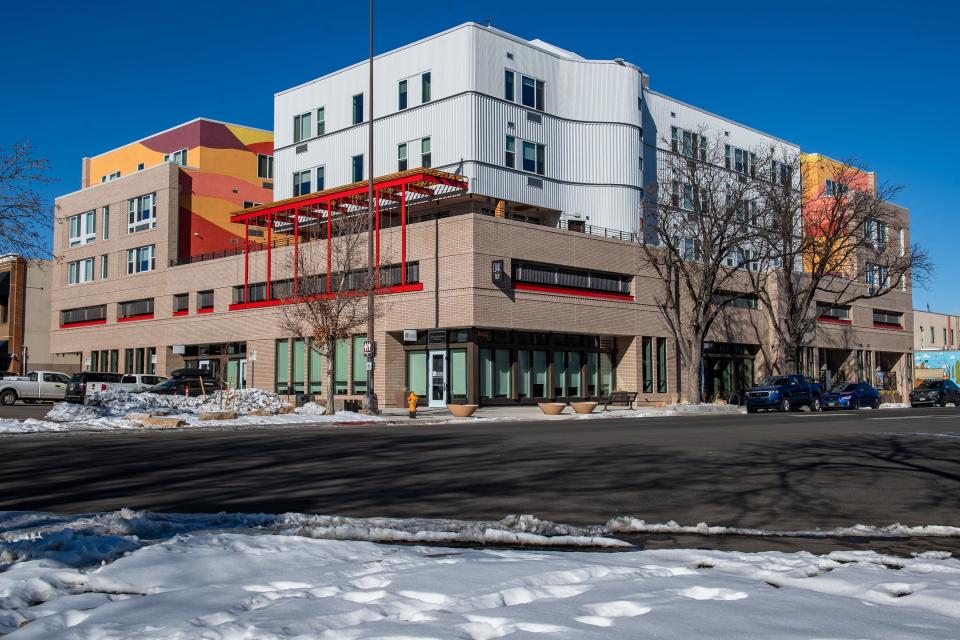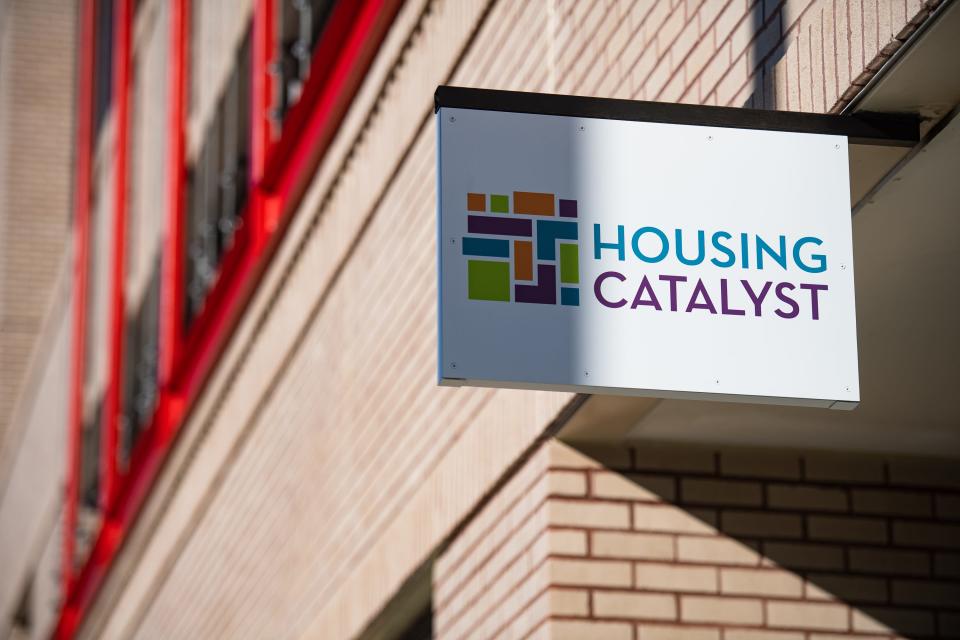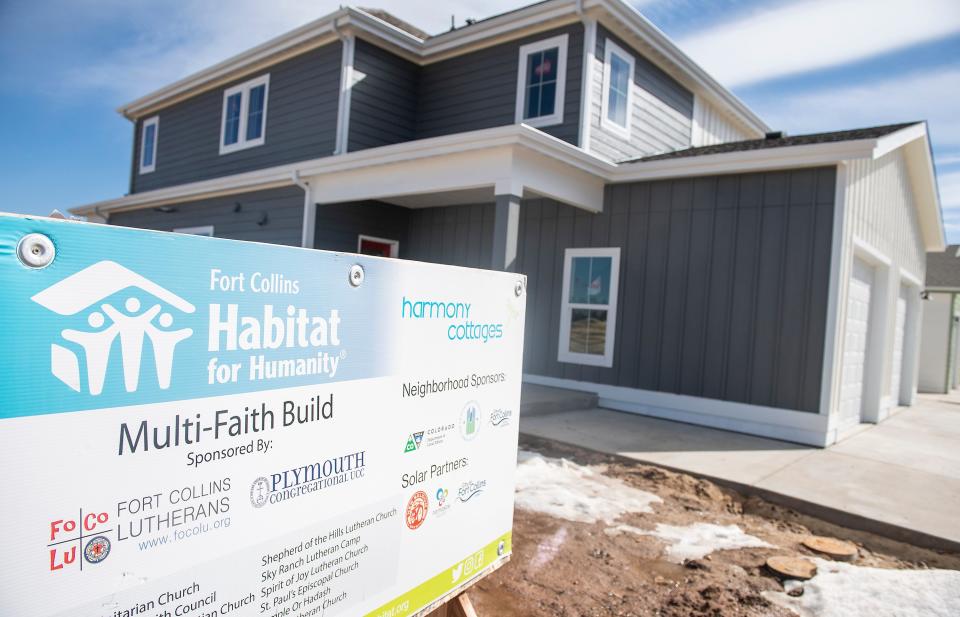Affordable housing can be a complex topic. Here's what to know about it in Fort Collins
Affordable housing is a hot topic not just here in Fort Collins, but across Colorado and the country. And while it’s something everyone’s talking about, it’s an extremely complex issue with many definitions and nuances to understand.
When people talk about "affordable housing," they could be referencing a couple of different ideas. The difference between affordable housing, as it's defined in the housing world, and attainable housing is worth knowing.
You might hear the terms used interchangeably, but — much like the distinction between a square and a rectangle — while affordable housing is always attainable, attainable housing doesn’t always meet the requirements to be deemed "affordable."
As the Coloradoan regularly reports on the affordable housing challenge, we've put together the following guide to terms, organizations to know and other frequently asked questions to help you understand what it all means.
If you think of other terms you’ve heard as part of the topic, drop them in the comments to help us round out our affordable housing dictionary.
Affordable, attainable, workforce housing: What's the difference? And who qualifies?
Affordable housing
The city of Fort Collins follows the housing industry definition of affordable housing, explained in its Housing Strategic Plan, which was adopted in 2021:
rental housing that costs no more than 30% of income for a household making 80% or less of the area median income (AMI)
a mortgage that costs no more than 38% of income for a household making 80% of less AMI
Fort Collins' 2022 AMI is $107,300 for a family of four in Fort Collins, and it's $75,200 for a single person. A four-person household earning 80% ($85,840) would need to spend no more than $2,146 on monthly rent or no more than $2,718 on mortgage payments to fall below those marks. For a single person, that's no more than $1,500 in rent or $1,905 on a mortgage.
Affordable housing programs target "low"- or "very low"-income individuals and families often earning well below those marks, and housing is subsidized one way or another to ensure that offered housing fits in their budget.
Attainable housing
Attainable housing has a much foggier definition than affordable housing, and it’s one that will likely continue to change as housing prices increase.
“We have good definitions for affordable housing — that's subsidized and deed restricted,” said Meaghan Overton, housing manager for Fort Collins. “But as the housing challenges we’re facing have affected people higher up on the income spectrum, now we're talking about people who wouldn't qualify for affordable housing struggling to afford housing … people sometimes say that’s attainable housing.”
Generally, attainable housing targets those who make too much money to qualify for traditional, subsidized “affordable” housing — so more than 80% of AMI — but still struggle to find housing that eats up no more than 30% of their income.
So one of the largest differences is that attainable housing feasibly could still be market rate, while affordable housing needs to be subsidized or priced based on income so people considered low or very low-income can afford it.
Workforce housing
Workforce housing — very similarly to attainable housing — is often used to talk about housing for those who earn too much “to qualify for traditional affordable housing subsidies” but still struggle to make rent at market price. Because the U.S. Department of Housing and Urban Development (HUD) has programs for people making 80% of AMI or below, the Brookings Institute states that workforce housing is “most commonly intended for households with incomes between 80% and 120% of AMI.”
In Fort Collins, Oak 140 was the first low-income workforce housing project to open. Studio, one- and two-bedroom apartments are available to people making between 30% and 80% AMI, with the overall income average of about 60% of AMI.
Workforce housing can also be tied to a profession or employer, alongside income. Companies like Facebook and Microsoft have invested in building housing for their employees, and many advocate for workforce housing to help public school teachers, police officers or other similar professions afford living in the communities they serve. Many also think of early career professionals or service industry workers when they think of who would benefit from workforce housing.
Overton described workforce housing as “fuzzy” and said there’s no good definition because it’s often up to the developer of the project to set the terms. She said she also takes issue with the phrase because it implies people living in other affordable housing aren’t working, even though that’s not the case.

Who qualifies as low income?
According to U.S. Department of Housing and Urban Development, or HUD, someone is considered low income if they earn less than 80% of an area's median income (AMI). Very low-income people earn 50% or less of the AMI.
The Area median income, or AMI, for a city or town is the midpoint of a specific area’s income distribution and is calculated on an annual basis by HUD.
What does ‘cost burdened’ mean?
Cost burdened means a renter or homeowner is spending more than 30% of their income on housing. In 2021, when Fort Collins' most recent housing plan was passed, three in five renters and one in five homeowners in the city were cost-burdened. Affordable housing is designed to prevent people from becoming cost burdened by providing them places to live that don’t cost more than they can afford.
What’s Fort Collins’ AMI?
The 2022 AMI is $107,300 for a family of four in Fort Collins, and it's $75,200 for a single person. To see the AMI for other size families, visit https://www.fcgov.com/socialsustainability/files/income-limits-only-2022-2.pdf.
The 2023 AMI numbers will likely be released in May this year, according to HUD.
What are ways to make housing affordable?
Inclusionary zoning (and why Fort Collins doesn't have it)
Inclusionary zoning is when municipalities require, or sometimes incentivize, developers to include some affordable housing in new projects.
According to HUD, inclusionary zoning can look a lot of different ways. Programs can be mandatory or voluntary and have a number of requirements, affordability levels, and control periods. HUD also says that “most inclusionary zoning programs offer developers incentives, such as density bonuses, expedited approval and fee waivers.”
A number of other Colorado communities have inclusionary zoning, like Boulder, Denver, Longmont and most of Colorado's mountain communities.
Previous Coloradoan reporting shows Fort Collins has considered inclusionary zoning twice but has instead focused on incentivizing rather than requiring affordable units. Overton said there are a number of reasons for this, and although Fort Collins hasn’t chosen to require new housing developments to include affordable units, the city has focused on incentivizing construction of affordable units.
Overton said the last time Fort Collins leaders considered inclusionary zoning, in 2020, there were rules in place preventing it from being used on rental properties, meaning they could only require owned properties to have affordable units, which was a barrier for the city. That rule changed in 2021 when the state decided inclusionary zoning could be used on rental properties.
In addition, the last time the city was considering it, Overton said there were still enough units filling the need for middle-income renters “that mandating affordable housing might not have worked as well as we wanted it to.”
There were also concerns around negatively impacting land values, diminishing a project’s feasibility and deterring some projects from being developed if inclusive housing policy was implemented.
Overton said if the city wanted to implement any kind of inclusionary zoning, it would need to be closely intertwined with the land use code, which is currently undergoing revision.
“What happens with the land use code changes will have a direct impact on many of the policy questions inherent in designing an inclusionary housing policy,” she said.
Related:Fort Collins will restart land use code revision outreach soon. Here's what to expect.
Deed-restricted housing
Deed-restricted housing is housing in which the deed stipulates what income range the units are available to, how many units that requirement applies to and how long that restriction is in place, according to Overton.
In an apartment building, for example, the deed could require that five units be set aside for people making 60% AMI for 20 years. That would mean that as AMI changes, rent would have to be no more than 30% of someone's income who is making 60% AMI.
Currently, in Fort Collins, the deed restriction time period for affordable housing is 20 years, though the proposed land use code changes — again currently under revision — would have changed that requirement to 99 years.
Rent control
Rent control basically means there is a maximum amount that can be charged for rent. Once that’s hit, rent cannot be raised anymore.
Back in the 1980s, rent control was banned in Colorado. But at the Colorado General Assembly this session, legislators are considering repealing the ban and letting municipalities decide whether to pass their own limits on rent. If that passes, cities like Fort Collins could implement their own rent controls, which would, in theory, prevent rents from getting too expensive, thus creating more attainable housing.
Rent control can limit the total rent that can be charged, or on the increase allowed. For example, the bill being considered in the Colorado legislature this session would prevent rent from being raised by more than 3% higher than the rate of inflation based on the Consumer Price Index, meaning a landlord couldn't exceed that approved increase annually or they'd be in violation of rent control laws.
Sliding rent scales
A sliding rent scale is utilized by some affordable housing projects to determine what one’s rent will be. In programs that use a sliding scale, what the tenant pays is based on their income.
Housing Catalyst projects, for example, have income limits ranging from 30% to 80% of Fort Collins’ AMI, and rent is calculated on what percentage the renter makes, usually adhering to the common understanding that to be affordable, one shouldn’t pay more than 30% of their gross income.
Housing vouchers
Housing vouchers allow people making less than AMI to access “safe, decent and affordable privately-owned rental housing,” according to Housing Catalyst. In voucher programs, the public housing authority giving the voucher makes a payment directly to the landlord or bank on behalf of the renter or owner, and the renter pays the difference between the rent and what’s subsidized.
Locally, Housing Catalyst estimates that “voucher program participants usually pay about 30% of their monthly income toward rent.”
Who is working to increase affordable housing?
HUD
HUD is the U.S. Department of Housing and Urban Development. The department, according to its website, is the “agency responsible for national policy and programs that address America's housing needs, that improve and develop the nation's communities and enforce fair housing laws.”
HUD oversees affordable housing programs nationwide, like housing vouchers, some public and affordable housing projects and homeless assistance programs.
Housing Catalyst

Housing Catalyst is a quasi-governmental entity, public housing authority, real estate developer and property manager working in Northern Colorado to address housing deficiencies. According to its website, Housing Catalyst owns and manages 1,600 local residences.
It’s Northern Colorado's largest property manager, and Fort Collins’ most prominent organization addressing affordable housing.
The agency is overseen by a board of commissioners appointed by the city, but it isn’t a government agency. It is a partner of the city and has partnered with other groups to provide housing or services. Housing Catalyst receives most of its funding from rent from its various properties and grants.
CARE Housing
CARE Housing is a partnership between public, private and religious groups that works to build and manage affordable housing that also provides “supportive services to strengthen and empower families and to build community,” according to its website.
It specifically provides affordable housing for working Northern Colorado families with dependents, senior citizens and people with disabilities who earn between 30% and 60% AMI.
The organization has developed six affordable housing communities in Fort Collins and one in Windsor.
Habitat for Humanity

Fort Collins Habitat for Humanity is a nonprofit, Christian housing group and an affiliate of Habitat International. The organization builds houses with families in need and then sells the house at an affordable rate.
Homeowners earning less than 50% AMI traditionally cannot qualify for a mortgage, but Habitat subsidizes the cost of homes for low-income families by selling the home with no profit, giving a mortgage with a 0% interest rate and ensuring payments don’t exceed 30% of a family’s gross income.
The organization is building Harmony Cottages at the southeast intersection of Harmony and Taft Hill roads. It will be the largest development Habitat has built here, consisting of 48 homes estimated to create housing for about 144 people.
Fort Collins' land bank for affordable housing
The land bank is Fort Collins' “only long-term affordable housing tool,” according to its website. The program tries to ensure that land will be available to increase the city's affordable housing stock when it's needed.
Through the land bank program, the city works to acquire sites that lack infrastructure — thus having a lower price — “and then wait until development occurs.” In theory, once other development projects happen around the area, the property will be less expensive to develop into affordable housing.
The city has bought six sites as part of the land bank program, with the latest addition being bought in 2020. Just one has been “activated” so far, meaning it was sold to Housing Catalyst in 2016, which developed it into 96 permanently affordable apartment homes.
Neighbor to Neighbor
Neighbor to Neighbor is a housing resource that serves all of Larimer County and specializes in helping prevent clients from falling into homelessness, finding affordable housing and maintaining ownership of housing.
The organization has affordable housing communities in Fort Collins and Loveland — both of which are full — and hosts programs to educate on rental assistance options, utility assistance options and home buying. Last December alone, Neighbor to Neighbor distributed $526,327 in rental and utility assistance to 275 households, and $625,237 in mortgage assistance.
They also run a home share program, in which people 55 or older can rent out a room in their house to someone in need of affordable housing. Renters can potentially help with household chores in exchange for lower rent, room providers can get some extra income and the community is provided with “a unique, affordable housing solution,” according to Neighbor to Neighbor.
Molly Bohannon covers city government for the Coloradoan. Follow her on Twitter @molboha or contact her at mbohannon@coloradoan.com. Support her work and that of other Coloradoan journalists by purchasing a digital subscription today.
This article originally appeared on Fort Collins Coloradoan: Fort Collins affordable housing glossary: Key definitions, organizations

